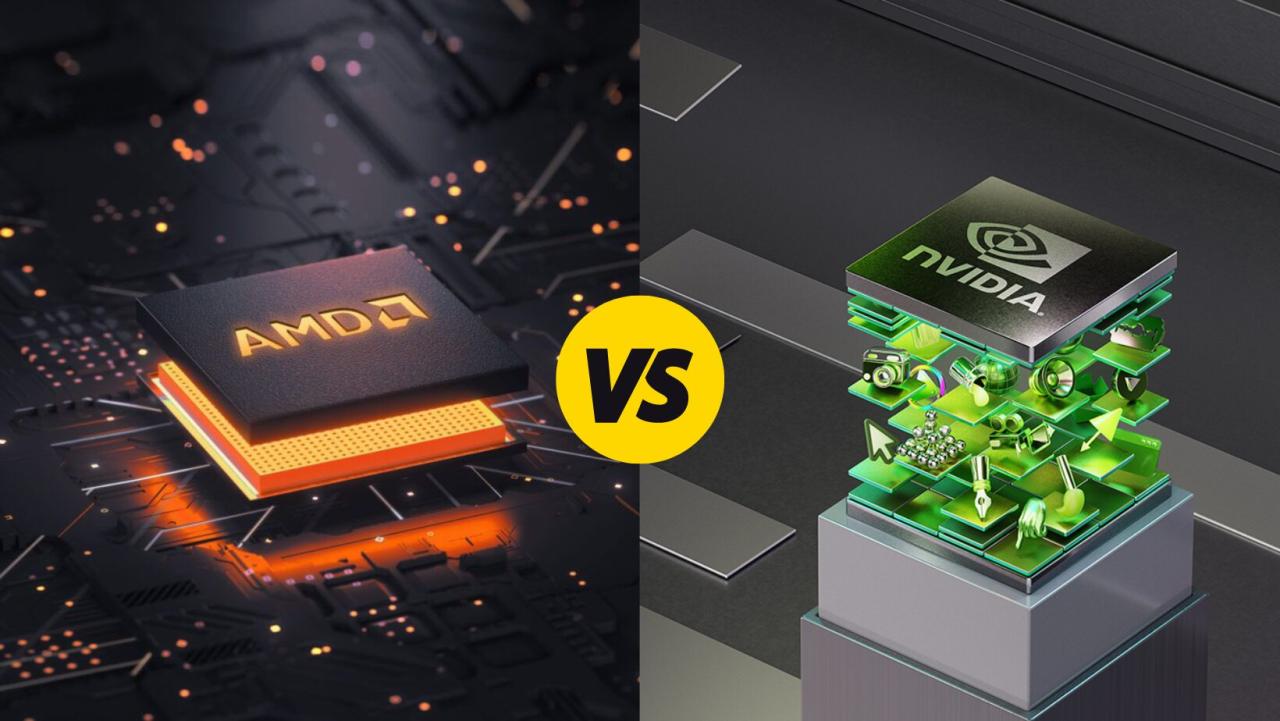NVIDIA vs AMD Drivers: Which Are More Reliable?
In the ever-evolving world of graphics cards, performance numbers often grab the spotlight. Gamers and creators alike look at frame rates, power draw, ray tracing, and benchmark scores when choosing between NVIDIA and AMD GPUs. But beneath the surface performance metrics lies something equally critical: driver reliability. A powerful GPU is only as good as the software that makes it function. And that’s where the battle between NVIDIA and AMD drivers becomes more than just a footnote—it becomes a deciding factor.
This article takes a close look at how reliable NVIDIA and AMD drivers truly are in 2025. Based on real-world experience, update history, stability reports, and user feedback, we’ll help you make an informed decision on which GPU maker provides the smoother, less headache-inducing experience.
Understanding the Role of GPU Drivers
Before diving into the comparison, it’s important to understand what drivers actually do. A GPU driver is the bridge between your graphics hardware and the operating system. It allows games, video editing apps, and even your desktop interface to communicate efficiently with your graphics card.
An unreliable driver can lead to:
-
Game crashes or freezes
-
Screen flickering or blackouts
-
Poor performance or frame stutter
-
Incompatibility with new software or updates
-
Blue screens or system restarts
In short, driver reliability is not a bonus feature—it’s the foundation of your system’s graphics stability.
NVIDIA Drivers: The Reputation for Stability
NVIDIA has long been recognized for its focus on driver quality, particularly among professionals and gamers who value stability above all else. Over the past decade, their Game Ready Driver (GRD) program has offered optimized drivers on the day of major game releases. This ensures that popular titles run smoothly from day one, without waiting weeks for patches.
Key strengths of NVIDIA drivers in 2025:
-
Frequent updates timed with game launches
NVIDIA consistently releases drivers tailored for the latest AAA games, ensuring high compatibility and stable performance out of the gate. -
Studio Drivers for Creators
In addition to Game Ready Drivers, NVIDIA offers Studio Drivers optimized for creative applications like Adobe Premiere, DaVinci Resolve, Blender, and AutoCAD. These drivers are tested more rigorously for stability, making them ideal for video editors, 3D artists, and designers. -
Proven compatibility with Windows updates
NVIDIA drivers are generally quick to adapt to new Windows builds. Major compatibility issues are rare, and hotfixes are often deployed rapidly when problems arise. -
Solid software ecosystem
NVIDIA’s GeForce Experience not only helps with driver updates but also includes features like game optimization, screen recording (ShadowPlay), and streaming, all without needing third-party tools.
Common criticisms of NVIDIA drivers:
-
Occasional bloat in the driver package due to bundled features users may not need
-
Less flexibility for enthusiasts who want deep driver-level tweaks compared to AMD’s open software model
Nonetheless, when it comes to “install and forget” reliability, NVIDIA still sets a high bar.
AMD Drivers: A Story of Major Progress
Just a few years ago, AMD had a mixed reputation when it came to drivers. Complaints about crashes, black screens, or delayed support for new games were not uncommon. However, in recent years, AMD has made huge strides in driver reliability, and the landscape in 2025 looks vastly improved.
Key improvements and strengths in AMD drivers:
-
Adrenalin Software Suite
AMD’s Adrenalin software has evolved into a powerful, polished control panel that integrates driver updates, performance tuning, streaming, monitoring, and recording—all in one clean interface. -
Frequent updates with feature additions
Unlike NVIDIA, AMD often uses driver updates as an opportunity to introduce new features like Anti-Lag+, Radeon Super Resolution, or HYPR-RX (a one-click performance booster). This keeps the user experience fresh and modern. -
Cleaner install options and minimal bloat
AMD allows for more flexible installations, including minimal driver packages for users who want just the essentials. -
Improved day-one game support
While AMD may not always match NVIDIA in day-one support for every title, they have become significantly more consistent, especially for major releases.
Lingering issues with AMD drivers:
-
Intermittent stability issues with specific games or systems still crop up
-
Some users report longer delay times between bug reports and fixes
-
Complexity in tuning and customization can overwhelm less technical users
Despite these concerns, AMD has come a long way and deserves credit for its focus on transparent release notes and community engagement when issues arise.
Driver Update Frequency and Quality
One way to measure reliability is by looking at how often drivers are released—and whether those releases cause more problems than they solve.
-
NVIDIA releases drivers more frequently, especially around game launches. They also issue Hotfix Drivers that quickly address bugs reported by users. While their updates are more incremental, they’re generally stable.
-
AMD has fewer, but more feature-packed updates. These are more likely to introduce big changes or new tools, which sometimes lead to instability in early stages. However, the driver team has gotten faster at reacting to issues.
In terms of testing and polish, NVIDIA still holds a slight lead, particularly in professional workflows or multi-GPU environments.
Real-World User Feedback and Forums
Online communities such as Reddit, tech forums, and GPU benchmarking sites offer insight into user experience over time.
-
NVIDIA users often mention that once drivers are installed, they rarely need to be touched again. Crashes are uncommon, and compatibility with both gaming and creator tools remains high. However, there are gripes about GeForce Experience being resource-heavy or occasionally buggy.
-
AMD users praise the performance improvements that often come with new drivers. On budget GPUs, driver updates sometimes unlock extra value. Still, a pattern remains: some systems experience random crashes or flickering, especially with aggressive settings or undervolting applied.
It’s worth noting that driver performance can also depend on the specific GPU model. High-end cards from both companies tend to receive more optimized support than older or entry-level models.
Which Drivers Are More Reliable in 2025?
Let’s sum it up across different use cases:
For gamers who want stability and ease of use:
NVIDIA remains the safer bet. Their Game Ready Drivers, faster hotfix response time, and proven stability in new titles make them the go-to for plug-and-play performance.
For creators who prioritize stability and compatibility:
NVIDIA’s Studio Drivers offer certified support for many industry-standard creative applications, making them more reliable for professional workflows.
For enthusiasts and tweakers who want control:
AMD’s Adrenalin Software allows for finer performance adjustments, undervolting, and per-game profiles. It’s a strong choice for users who enjoy optimizing and experimenting—though it comes with slightly higher risk.
For budget-focused users:
AMD has been praised for squeezing more performance out of lower-end hardware through software optimizations. If you don’t mind a little tinkering, AMD drivers have matured enough to be reliable for daily use.

Final Thoughts:
Both NVIDIA and AMD have worked hard to improve their drivers over the years. In 2025, the gap between them has narrowed significantly. NVIDIA still leads in raw reliability and polish, especially for professionals and gamers who want a smooth, hands-off experience. AMD, on the other hand, offers a more dynamic, customizable software package, appealing to power users who like to get under the hood.
So, which is more reliable? If your top priority is stability, minimal hassle, and broad compatibility, NVIDIA drivers still take the crown. But if you’re willing to explore, tweak, and occasionally work through a hiccup, AMD offers strong value with impressive progress in driver reliability.
Ultimately, your specific needs, GPU model, and software environment should guide your choice. Either way, today’s drivers are far better than they were five years ago—and that’s a win for everyone.

With years of experience in technology and software, John leads our content strategy, ensuring high-quality and informative articles about Windows, system optimization, and software updates.











![7 Common Windows 10 Errors And How To Fix Them [2020] - TechDipper](https://windows12download.com/wp-content/uploads/2023/04/Windows-10-Errors-300x169.jpg)

Post Comment
You must be logged in to post a comment.